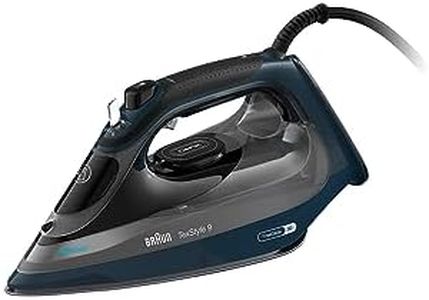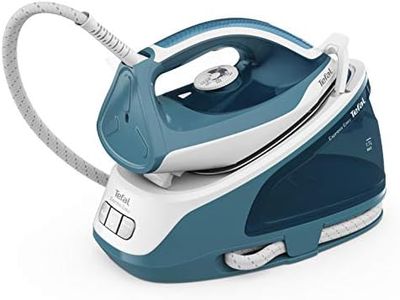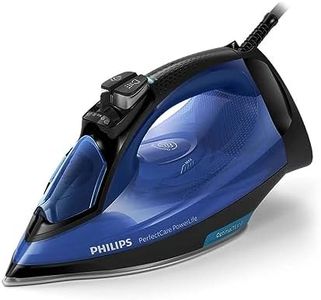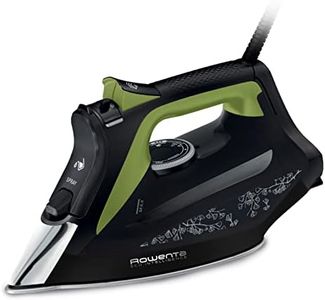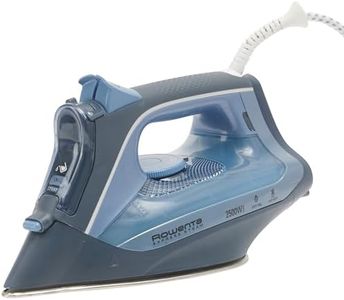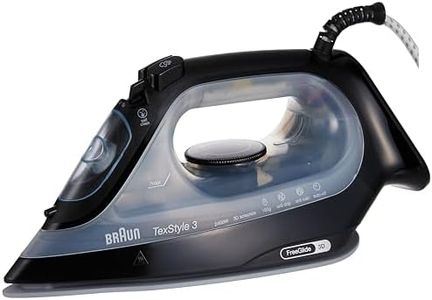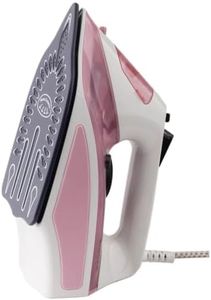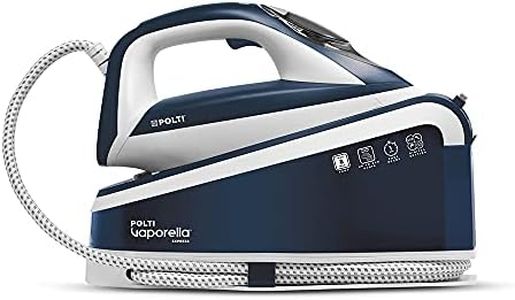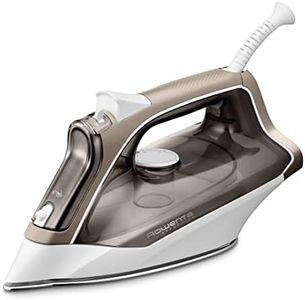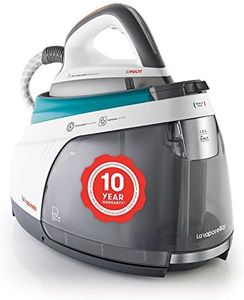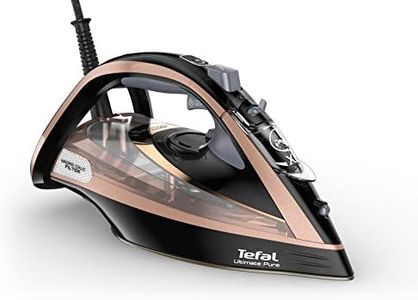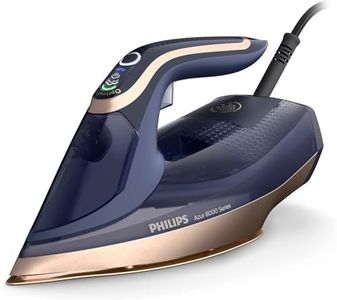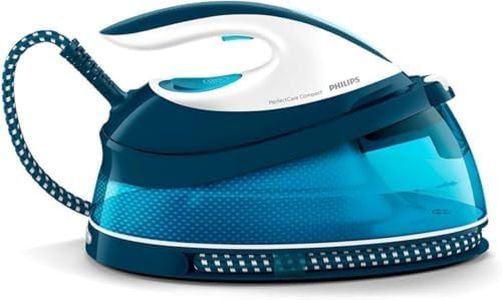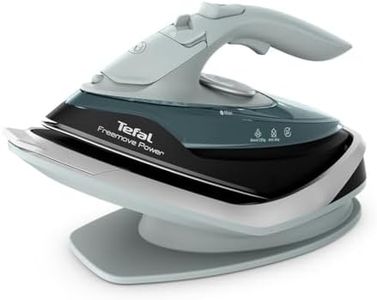We Use CookiesWe use cookies to enhance the security, performance,
functionality and for analytical and promotional activities. By continuing to browse this site you
are agreeing to our privacy policy
10 Best Commercial Steam Irons
From leading brands and best sellers available on the web.Buying Guide for the Best Commercial Steam Irons
When choosing a commercial steam iron, you're focusing on performance and durability since these models are designed for heavy, repeated use in environments like hotels, laundries, or tailoring shops. It's important to think about what fabrics you'll be working with most and how often you'll need to use the iron throughout the day. Good steam output, ease of use, and long-term reliability should guide your decision. Comparing the most important specifications can help you match the iron to your specific workload and expectations.Steam OutputSteam output refers to how much steam the iron can produce, usually measured in grams per minute. This is key because more steam helps to remove wrinkles more effectively, especially from thicker or more difficult fabrics. Lower steam outputs (under 30g/min) are best for lighter tasks or delicate fabrics, while mid-range outputs (30–50g/min) serve most general commercial needs. High steam outputs (above 50g/min) are best for very demanding environments or when working with heavy materials like linens and cotton. Think about whether you'll mostly press everyday clothes or heavier textiles to find the right range for your use.
Water Tank CapacityWater tank capacity is how much water the iron can hold and turn into steam. Larger tanks mean you can iron longer without having to refill, which is helpful in commercial settings. Small tanks (under 300ml) are lightweight but require more frequent refills and suit quick jobs or lower-volume work. Medium tanks (300–800ml) are practical for most typical commercial tasks, balancing weight and run time. Very large tanks (over 800ml) are suitable for uninterrupted sessions over several hours, but the iron may be heavier. Match the size to how long you'd like to iron before a refill interrupts you.
Soleplate MaterialThe soleplate is the flat surface of the iron that comes into contact with clothes. Its material affects glide, heat distribution, and durability. Stainless steel soleplates are smooth, durable, and easy to clean, while ceramic provides even heat and helps avoid sticking. Aluminum heats quickly, but can be less robust over time. For heavy, frequent use, choose a material that suits both your main fabric types and your preference for cleaning and maintenance. Smooth plates are better for delicate fabrics, while thicker, more robust plates may handle heavier usage.
Heating TimeThis is how quickly the iron reaches its desired temperature and steam output after being turned on. Fast heating times (under a minute) mean you can start working almost immediately, which is a big plus in fast-paced environments. Moderate heating times (1–3 minutes) are acceptable for steady workflows, but longer waits may slow you down if you're ironing all day. If quick turnaround is important, look for an iron explicitly designed for minimal heat-up time.
Continuous Operation FeaturesCommercial irons often include features to keep them running for long sessions, like anti-calc systems or auto-shutoff. Anti-calc systems help prevent mineral build-up from hard water, which keeps the iron running smoothly and reduces maintenance hassles. Auto-shutoff is a safety feature in case the iron is left unattended. If you'll be ironing daily for long stretches, prioritize durability features like anti-calc over fancier convenience settings.
Weight and ErgonomicsThe iron’s weight affects both pressing power and user comfort. Heavier irons can help flatten stubborn wrinkles but might tire out your arm over long periods. Lighter models are easier to maneuver and reduce fatigue, but may require more effort on thicker fabrics. Ergonomic handles and balanced designs are important if you use the iron for hours at a time. Test or imagine using the iron for your typical workload to see what feels right.
